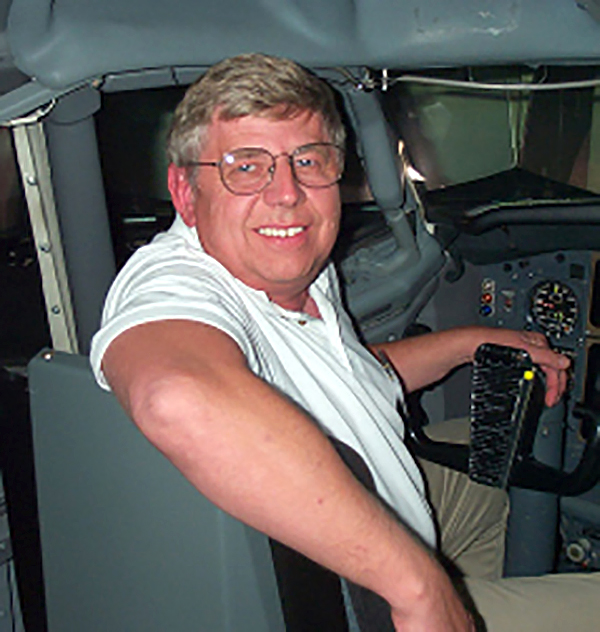Beware of Avionics Differences
By Michael J. “Mick” Kaufman

It has been a busy summer with flight training and three new instrument pilots. Congratulations to Andrew Marso of Franklin WI; Eli Judge of Whitefish, MT; and Kevin Ermis of Conover, WI and two more to finish this year. Along with the instrument ratings, there were numerous flight reviews and instrument proficiency checks and several BPT Clinics.
During this training, I, too, learned a lot, especially about using the latest state-of-the-art avionics, which is the center topic of my column in this edition of Captain’s Corner.
It seems like it would take volumes of encyclopedias to document the different combinations of avionics I have seen in the last several decades. Therefore, I will highlight one of my most recent encounters. I have written this before and I will mention it again: If you have avionics in your airplane that are modern enough to manage WAAS GPS approaches and it works well, do not upgrade! I am talking about the Garmin 430/530 generation of avionics.
In evaluating real world IFR flying in this generation of avionics, there are only two practical applications I consider missing: the ability to insert airways into your flight plan and the ability to create nonpublished holds. Everything else is just fluff.
As for glass displays, they are cool and work well if the pilot does not clutter the display with too much information. Real pilots fly steam gauges, tailwheel airplanes and gliders. As for touch screen displays, try programming one in heavy turbulence.
Now for the other side of me, I am a geek, and I enjoy the challenge of helping pilots learn what their avionics package can do. One day, we spent over 1.5 AMUs (aviation monetary units) = (a thousand dollars) in fuel to find out why sometimes the autopilot captured the glideslope and sometimes, it did not. As it would be too lengthy in this column to discuss every incident I have found, I have picked a training situation from our recent Fresno, CA BPT Flight Clinic to present below:
The aircraft was a V-tail Bonanza.
Avionics installed:
- Garmin GTN-750 GPS Navigator
- Garmin G-3X Display
- Garmin GFC-500 Autopilot with Garmin ESP-X and air data computer.
Using the above avionics, we were able to find some flight features, which have changed with this combination of equipment due to envelope protection with the autopilot that Garmin refers to ESP-X.
In previous installations, if the approach could not be completed and the pilot decided to do a missed approach, he followed this procedure: Power UP, Pitch UP, Gear UP, while pushing the “Go-Around” button. The flight director gave the pilot a pitch command of about 7 degrees in a Bonanza, and it disconnected all of the autopilot functions except the flight director command bars.
Now, the pilot was hand-flying the flight director command bars in pitch mode. If this approach was other than a GPS approach, the pilot needed to select GPS mode on the navigator; re-engage the autopilot; select NAV mode; and turn the autopilot back on.
If the aircraft was equipped with GPS steering, that was selected instead of the NAV mode for more accurate tracking of the missed approach course.
One last step was necessary after flying the first part of the missed approach: unsuspend the navigator to proceed to the missed approach / holding fix. The reason for disconnecting the autopilot functions on the missed approach was to keep the aircraft from stalling on the climb-out, should the pilot fail to add power and clean up the aircraft.
So, what did our aircraft do in a similar situation with the above Garmin equipment?
On the missed approach, as the pilot pushed the “Go-Around” button, the navigator switched to GPS mode for the 3X missed approach; the flight director pitched up; and the autopilot went to roll mode; servos engaged; and the autopilot was on. The pilot needed to engage the NAV function on the autopilot and unsuspend the navigator to fly the published missed approach.
In the situation with our training, the missed approach was complex with several turns, as the aircraft reached certain altitudes and finally leveled off at the altitude we had set in the preselect window. All of this was provided by an air-data computer. The envelope protection Garmin ESP-X saved the aircraft from a stall in case the pilot did not apply power and clean up the aircraft.
While training this pilot, I found several items I would consider a firmware glitch that pilots should be aware of with this or similar equipment.
During the ILS approach with GPS-assist, the autopilot would disconnect when switching from GPS to VLOC mode, and the aircraft appeared to go into autopilot roll mode. The pilot would need to re-engage the approach mode when this happened. Another glitch we found was that the vertical NAV function did not work on ILS approaches; however, it did work on GPS approaches.
It is sometimes difficult to work through items that do not do what is expected when flying different avionics. For example, what happens when a Garmin GI-275 does not happen on a Garmin G3X or different firmware in any of the boxes? Bill Hale our “Avionics Guru” with the Bonanza / Baron Pilot Training Program and I are working on compiling data on different pieces of avionics equipment for a classroom presentation at a future BPT Clinic.
You may find it interesting to read more about Garmin’s ESP-X flight envelope protection system, as I have only scratched the surface in its capability.
See you at a future Bonanza / Baron Pilot Training Program.
Michael J. “Mick” Kaufman
BPT Program Manager / Flight Operations



